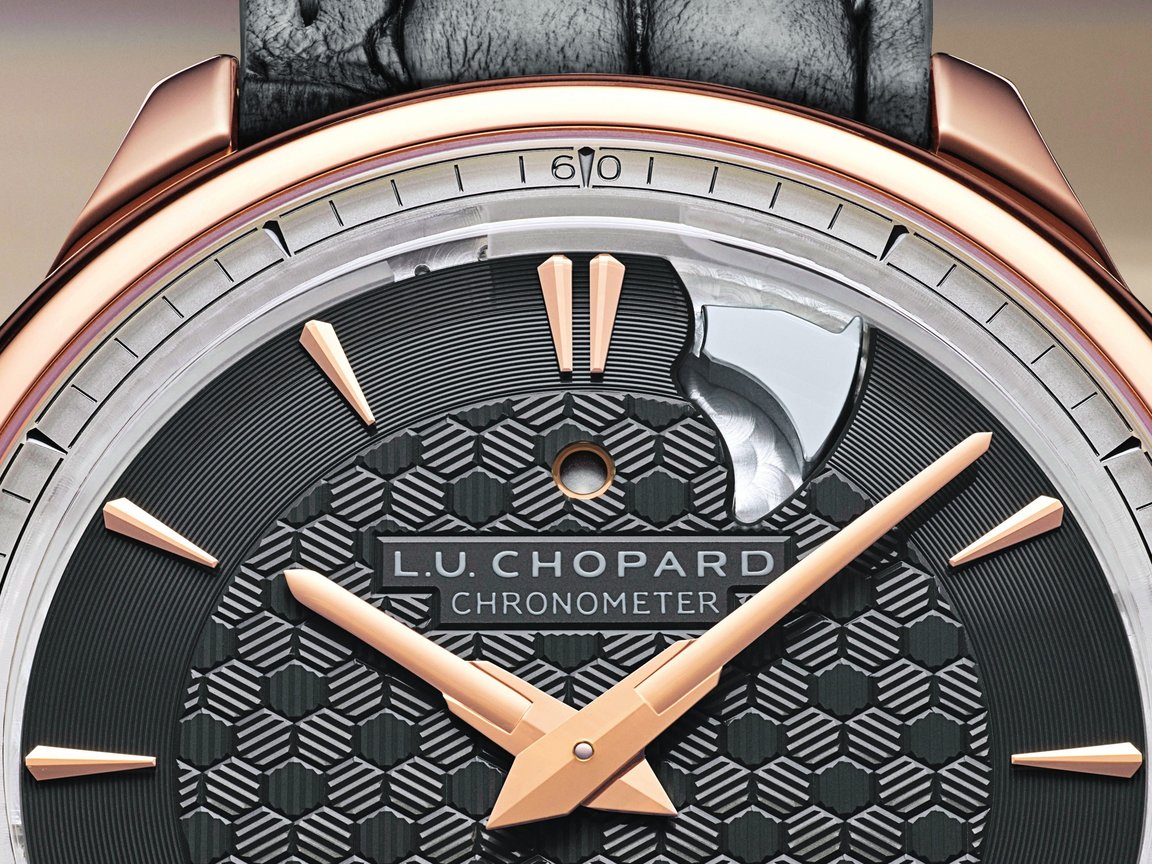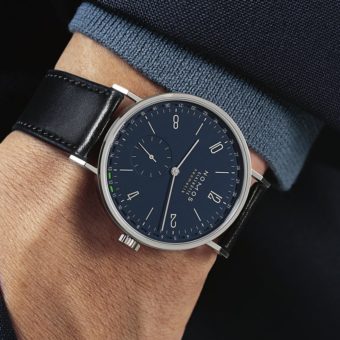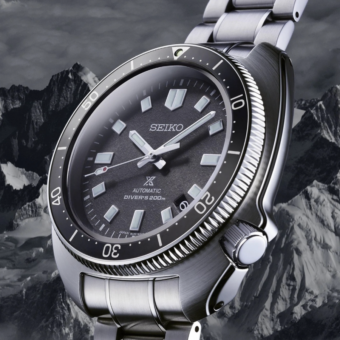This article was originally published in the July/August 2022 Issue of the WatchTime print magazine.
On one hand, Karl-Friedrich Scheufele, the son of German entrepreneurs Karl and Karin Scheufele who acquired Chopard with five employees in 1963, could easily be described as a visionary. Since the 1980s, “KFS” has been the driving force behind the maison’s mission to become a true watch manufacture (at a time when a large part of the Swiss luxury brands still relied on external movements). Thanks to his determination, Chopard quickly evolved into an independent haute horlogerie heavyweight, right at the time when mechanical watchmaking became destined for a renaissance. “At first it wasn’t just about becoming a manufacture; that was the second step,” he said. “It was mainly about creating our own automatic movement [the 1.96 that was named after the year it was completed]. This made me realize that we would have to reorganize everything. We did look at a couple of smaller manufactures, but ultimately decided to start from scratch, with a blank sheet of paper, and a lot of verve.”
Karl-Friedrich Scheufele, and obviously also his sister Caroline who is Chopard’s co-president and artistic director, could also be described as pioneers. Chopard started to focus on sustainability and corporate governance (e.g., by implementing an ethical gold policy across all watches and jewelry at the family-owned manufacturer), years ahead of the rest of the industry. But perhaps most importantly, Karl-Friedrich Scheufele can probably be described best as the quintessential gentleman: humble, compassionate, cultivated. The opposite of arrogance. He almost always uses “us” and “we” in his answers, and rarely talks about himself. In this context, it makes even more sense that the L.U.C collection was named after Louis-Ulysse Chopard, the company’s founder.

“One of the cornerstones of our philosophy was not to compromise, even if that meant it would take more time or posed new challenges,” he said. “We wanted to do it right from the beginning. And that’s what we did.” And indeed, they did. Chopard’s first movement, Caliber 1.96 with micro-rotor and two stacked barrels for a 65-hour power reserve, was developed with the help of Michel Parmigiani. It is widely regarded as one of the finest Swiss automatic movements and debuted in 1997 in the L.U.C 1860 with small second at 6 o’clock. Fast forward to 2016, the year Chopard would demonstrate that it had also mastered the most sophisticated and complex complications: to celebrate the 20th anniversary of the Chopard Manufacture in Fleurier, Chopard launched its first minute repeater. The L.U.C. Full Strike (Ref. 161947-5001) took six years to develop and introduced a number of worldfirsts, like striking the hours, quarters and minutes on sapphire gongs, Poinçon de Genève finishing, and above all, an extraordinary sound (the gongs and the minute repeater’s crystal were machined together from a single sapphire block, resulting in a unique and literally crystal-clear sound signature, with the crystal also taking over the role of an acoustic amplifier). And, like every watch in the L.U.C line-up, it also was a certified chronometer.

In November 2017, a visibly surprised and moved Scheufele went on stage in Geneva to accept the “Aiguille d’Or” Grand Prix of the GPHG for this watch. “I did not prepare a speech, because, honestly, as a member of the jury, I did not expect to win an award, and certainly not the Grand Prix,” he said. According to Chopard, almost 17,000 hours of work had been put into the development of the Full Strike’s Caliber 08.01-L, and Karl-Friedrich Scheufele did not waste any time in dedicating this prestigious award to the “extremely passionate team” behind it. And in conclusion, he said, “It is their prize tonight. Because at the end of the day, I was just the conductor of this orchestra, asking every month where we were with this watch.”
Chopard already had won awards at the GPHG before (11 in total as of 2021), for example, in 2012, the “Jewelry and Artistic Crafts Watch Prize” with the Imperiale Tourbillon Full Set (Ref. 384250-1002). But until 2017, Chopard had never won with a complication. “We have been participating in the GPHG for a number of years, but this is the first time we have won with a complication of this type, which shows how far the Manufacture has come in 20 years,” Scheufele said.

In 2018, Scheufele attended a concert by French classical violinist Renaud Capuçon. Capuçon is not only regarded as one of the virtuosos of his time, but also as a specialist in acoustics and sound, just like his brother, cellist Gautier Capuçon. Renaud plays on a period violin by Guarneri, dating from 1737; Gautier, on a cello by Matteo Goffriller. This encounter further convinced Scheufele in his belief that a minute repeater watch should be thought of as a musical instrument. He invited Renaud and Gautier Capuçon to participate in elaborating a new limited series of chiming watches. Aided and abetted by the engineers of Chopard Manufacture, the two virtuoso brothers helped fine tune the sound produced by the Chopard-patented sapphire gong/crystal technology. This approach was supported by the Applied Acoustics Laboratory of the Geneva engineering school HEPIA, headed by Professor Romain Boulandet, who created an analytical program that goes beyond the purely measurable criteria of acoustics (sound intensity, tonal richness, damping factor, etc.). Chopard’s goal was to deliver sound that was “purer, longer and more harmonious than that of traditional metal repeater mechanisms.” On top of that, sapphire gongs are unalterable, as they are not deformed, do not age and do not expand with heat. “They always play the same F and C sharp, thus ensuring that the sound itself remains unchanging.”

During Watches & Wonders 2022, Chopard presented a trio of repeaters using the monobloc sapphire crystal and gong system: The L.U.C Strike One (Ref. 161949-5001) is a 25-piece limited series in ethical rose gold with a guilloché gold dial and 40-mm diameter. The L.U.C Full Strike Sapphire (Ref. 168604-9001) adds a 42.5-mm case entirely in transparent sapphire to the striking components already cut from this crystalline material, along with a peerless minute repeater in a five-piece limited edition. Finally, the L.U.C Full Strike Tourbillon (Ref. 161987-5001) “accomplishes the feat of integrating a tourbillon within the limited space of a Chopard Manufacture minute repeater caliber.” This 42.5-mm watch is produced in a 20-piece rose-gold limited edition with guilloché gold dial.
The most eye-catching model of the three, the L.U.C Full Strike Sapphire bears the Poinçon de Genève hallmark, a first for a non-metallic minute repeater. Scheufele said, “It is an outstanding watch because we followed a completely different path, and it is a great example to showcase what goals we have set ourselves; we have never done a case like this.” The choice of lab-created sapphire also means that it is resistant to scratches, thanks to an estimated hardness of 9 on the Mohs scale, almost as hard as diamond. Moreover, although producing a sapphire case and dial entails considerable machining difficulties, it has the advantage of remaining unalterable over time and offers a 360-degree view of the movement. The 42.5-mm case is 11.55 mm thick and houses the L.U.C 08.01-L movement. Its patented resonant sapphire structure is complemented by several innovative technical systems, four of which are patented. Thanks to a separate, dedicated barrel wound directly by the crown, the L.U.C Full Strike Sapphire is able to chime the most complex and energy-intensive time of day (or night) — 12 hours and 59 minutes — up to 12 times when fully wound, thanks to its patented clutch-lever mechanism that ensures that the strikework going train is blocked, to avoid losing power reserve during the information capture that controls the minute repeater. The hand-wound movement consists of 533 parts; diameter is 37.20 mm, thickness is 7.97 mm. It is chronometer-certified by the COSC and offers a power reserve of 60 hours.

The L.U.C Full Strike Tourbillon, on the other hand, is powered by the 08.02-L caliber. Chopard’s watchmakers have placed the tourbillon at 6 o’clock, beneath the seconds hand. Its steel carriage picks up the distinctive spiral design — a signature element of L.U.C tourbillons. It, too, comes with chronometer certification from the official Swiss chronometer testing institute (COSC), but the power reserve is 50 hours. Obviously, moving from 533 components to 568 involved rethinking many interactions and layouts that can be found in the L.U.C 08.01-L. Furthermore, Chopard wanted to ensure that the tourbillon would not in any way modify the acoustic qualities of the chime. Thanks to the minute repeater having its own barrel, this naturally eliminates any energy-related interference, while the presence of the tourbillon does not alter the striking reserve.
With a diameter of 40 mm, L.U.C Strike One is the smallest of the trio. The model picks up the aesthetic codes inaugurated with the L.U.C XPS 1860 model, starting with its solid gold dial in ruthenium gray, bearing a snailed rim and a hand-guilloché center adorned with a honeycomb pattern (the beehive is one of the emblems that Louis-Ulysse Chopard chose to represent his workshops). At 1 o’clock, the dial features a cut-out revealing the mirror-polished steel hammer that generates the chime through a likewise hammer-shaped opening. The periphery of the dial bears a railway-type minutes track, engraved on the sapphire crystal. Just below this is the monobloc sapphire gong. The chime-in-passing mechanism rings out only when the minutes hand reaches 12 o’clock. Twenty-four times a day, on the hour, its hammer is automatically armed and strikes the gong once.

The L.U.C Strike One is powered by the new L.U.C 96.32-L, consisting of 275 parts. It features the typical architecture of L.U.C calibers, with its automatic winding via a micro-rotor in 22-karat gold. In addition, the Chopard Twin technology, with its double barrel, also ensures a 65-hour power reserve, even when the chiming mode is activated. The pusher controlling the chime, previously located at 10 o’clock, is now integrated into the crown. It is this pusher that enables the wearer to switch between silence and striking mode, indicated by a gold-ringed aperture at 12 o’clock. More discreet and also more comfortable on the wrist, this layout remains a Chopard-specific feature to date. In addition, the L.U.C 96.32-L movement is thinner than its predecessor, the L.U.C 96.14-L. This, in turn, enables the case of the new L.U.C Strike One model to be less than 10 mm thick at 9.86 mm. Like its two siblings, the L.U.C Strike One is chronometer-certified by the COSC and bears the Poinçon de Genève quality hallmark.
Although Chopard has not officially communicated prices for these three pieces, it is safe to say that demand exceeds supply. As a result, Karl-Friedrich Scheufele will personally pick the collectors who will be able buy one of these 50 pieces. “Usually we try to allocate these pieces to collectors that have supported us from the beginning,” he said, “people that have discovered the brand relatively early and respect what we do. Obviously, we will consider clients that have walked this path with us and value the innovation and development that went into these pieces.”
To learn more about Chopard, click here, and to subscribe to the WatchTime print magazine, click here.






